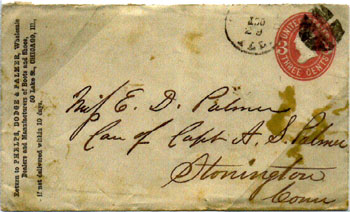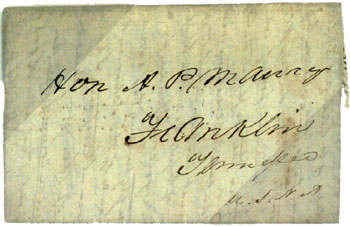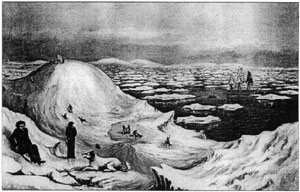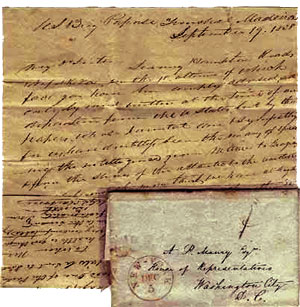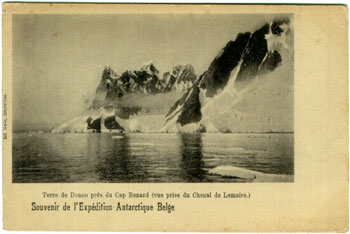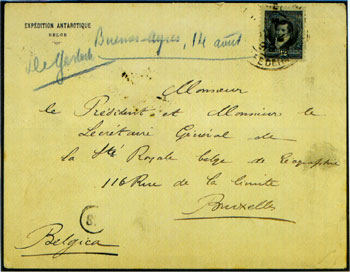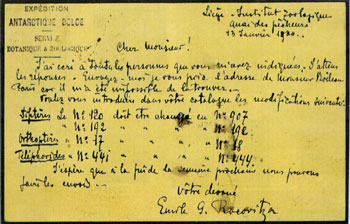 |
ANTARCTIC
CHRONOLOGY
A Postal History Gallery of Related Events 1820 - 1900 |
 |
|
Seamen theorized that a land mass would be found at the southern tip of the earth, but exploration was not undertaken until the early nineteenth century. Severe weather and blinding fog in the region cloaked it from view. Sealers and whalers worked in the area, but finally the Russian Czar sent a small exploration fleet to examine the southern regions and their visit, coupled with the sighting by a sealer captain, confirmed that there was in fact a land mass at the southern tip of the world. Since that time, there have been many parties in ships and other vehicles, including dog teams and aircraft, searching the icy continent for its secrets and treasures. They have formed a frustrating puzzle of origin, life forms and resources, and all of them remain almost beyond understanding and reach. Come along on a virtual tour of Antarctic exploration, as authenticated by its mail sent by these brave souls and adventurers . . .
|
An Almost Accidental Sighting of the Antarctic Continent . . .
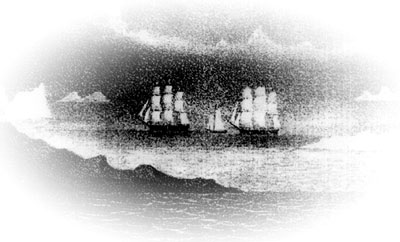 |
. . . made by Nathaniel Palmer during the Austral summer of 1820.
The young sealing captain was part of a five ship fleet of sealers under the general command of Benjamin Pendleton when he was sent from their base on Deception Island in the South Shetlands to study some unusual sightings on the horizon. Palmer's 40-ton cutter, named HERO, confirmed the presence of a new continent. A dense fog settled over the ship and in the morning they found themselves at rest between two ships of the Russian expedition led by Bellingshausen. The Russian charts named Palmer Land in his honor.
(Courtesy of the George Hall) |
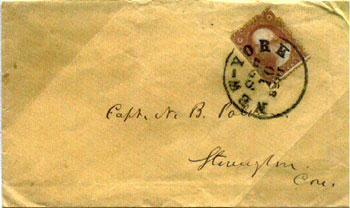 |
|
The Palmer Family in the Antarctic . . . Captain A.S. Palmer, the brother of Nathaniel, was a member of the discovery expedition of 1820, and later he was on the Palmer - Pendleton Exploring Expedition 1829-30. This voyage was expected to become an official U.S. Antarctic Expedition, however an official expedition was delayed eight years until the Wilkes voyage in 1838. The letter was sent to his son, who was then a midshipman, developing his career in the tradition of the Palmer family. The return address was the early family business venture -- Phelps, Dodge & Palmer Company in Chicago, IL. |
|
